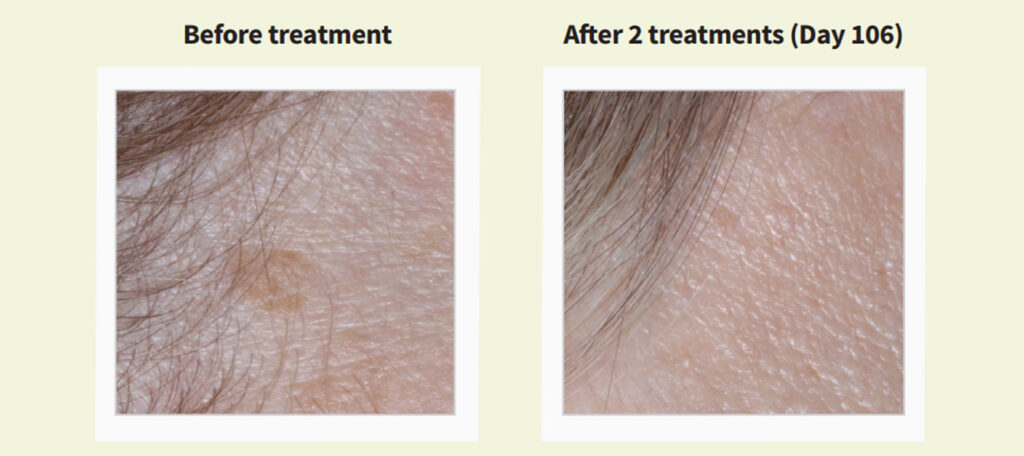




















Raised Sks can show up in your 40s or even in your 30s
You didn’t choose to get raised SKs— but you can choose to treat them If you have raised seborrheic keratoses (SKs), talk to your dermatologist today—because ESKATA, the first and only FDA-approved topical treatment for raised SKs, is finally here.
What are those spots on my face?
If they are SKs, they are harmless—but your dermatologist is the one to make that diagnosis. SKs are non-cancerous growths. The spots can be flat or raised with a color that is normal skin tone or darker. SKs can have a velvety, shiny, or wart-like texture and grow thicker. Over time, they may get bigger and more may show up.
Why did I get them?
Risk factors include age and genetics.
How are they treated with ESKATA?
- ESKATA provides:
- The only FDA-approved, topical treatment that can treat raised SKs
- A proprietary solution based on a high concentration of hydrogen peroxide that your healthcare provider applies directly to raised SKs using a soft -tip, pen-like applicator
- Topical treatment of raised SKs with a low risk of scarring (3% of patients in clinical studies)
What is ESKATA treatment like?
- ESKATA is applied with the soft-tip, pen-like applicator at your dermatologist’s office
- Your dermatologist will treat each raised SK 4 times, approximately 1 minute apart
- The most common side effects of ESKATA include itching, stinging, crusting, swelling, redness, and scaling
- ESKATA is not covered by insurance; it is a self-pay treatment
- ESKATA should not be used on open or infected lesions
When will I see results?
Your healthcare provider will evaluate your results approximately 3 weeks after treatment with ESKATA. If your treated raised SKs are not clear, your healthcare provider may apply ESKATA once more, as long as the treatment area is not irritated. In clinical studies, results were evaluated at Day 106 after initial treatment.


